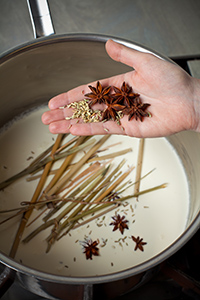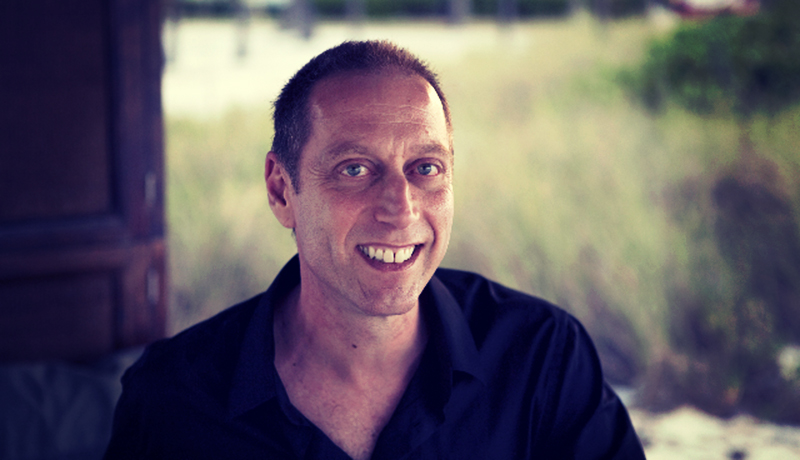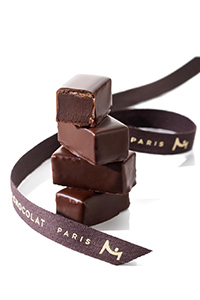

David Lebovitz
Photo Courtesy of David Lebovitz
David Lebovitz is an American-born professional cook, baker and cookbook author. After over a decade of working under legendary chef Alice Waters at Chez Panisse in Berkeley, California, Lebovitz moved to Paris in 2003. There he’s written seven books, including The Great Book of Chocolate, The Sweet Life in Paris, and My Paris Kitchen: Recipes and Stories. Lebovitz is also the culinary mastermind behind Paris Pastry Guide, an eBook and iPhone app featuring over 350 of his favorite chocolate, pastry and sweet shops in Paris, so it makes sense that we would reach out to him for secrets of Parisian chocolate and for a few names of the best places around the city to sample some.
How did you first discover French chocolate?
When I was working as a pastry chef in America in the late 1980s, we were using Guittard chocolate, which is an American chocolate created by a Frenchman in California during the gold rush days in the 1800s. So, I was used to using high-quality chocolate that had been made in the French style that’s bittersweet and not too sugary. Then in the 1990s, Americans became more interested in well-sourced ingredients, so certain French brands started becoming more prominent in America. I remember the first time I had Valrhona Chocolate. It was still expensive to import so, back then, you’d only see something like “Valrhona Chocolate Cake” on the menu of fancy American restaurants.

Glorious Ganache, Photo Courtesy of La Maison du Chocolat
What made you fall in love with Paris?
In California, we were influenced by the French idea of market-based cooking, which hadn’t quite taken hold in America like it has now. So I was naturally drawn to France for that reason. I liked the more ingredient-focused way of cooking, their use of goat cheese, dark chocolate, olive oil, thyme, etc. I also love the copper cookware! When I used to visit Paris, it was so cheap and, back then, there were no luggage restrictions, so I brought all this beautiful copper cookware home with me. I still have some of it. After visiting a few times, I enrolled in the École Lenôtre (the famous French pastry boutique and school), and then, eventually, moved to France permanently in 2003.
Is French chocolate different than chocolate from other countries?
All of the beans come from Africa or South America, so there’s nothing inherently French about chocolate, but there’s a French style of chocolate making. It’s well-conched, which means it’s often mixed for three days to make it really smooth so it melts in your mouth, as opposed to some of the coarser American chocolates. The French palate is very horizontal; they don’t like a lot of bold flavoring or seasonings such as chilies. We Americans like a lot of excitement in our food; we like to taste the flavors in chocolate. They like Valrhona because it’s very smooth, without any overwhelming roasted, [or having] cherry or espresso notes like you’d find in American chocolate. So that’s the biggest difference culturally. You also don’t see that many flavored French chocolates. If you go to the supermarket in France and look at the chocolate bars, most of the flavored ones are made by Lindt, from Switzerland. It’s easy to taste the difference in Swiss chocolate. It’s very sweet and creamy, not because they add sugar to it, but because they use cocoa beans that are less dynamic and not so rugged in character.
The French really like dark chocolate, but isn’t it more bitter?
It depends on the kind of dark chocolate. Americans are said to have a sweet palate, but that’s a generalization because I’m an American and I don’t like sugary chocolates. But we do tend to gravitate towards sweeter chocolates, and the French gravitate towards dark, but not necessarily acidy or intense chocolates. Most filled chocolates aren’t made with chocolate that’s high-percentage cacao because they don’t want it to overwhelm the flavor of the interior. The solid chocolate bars in France are often sold by percentage, such as 60 percent chocolate or 70 percent chocolate, but it doesn’t really mean that much. It’s the quality of the cocoa bean rather than a number on the package that determines the taste. Some beans are really strong and some are sweet depending on how they were fermented.

Adding Fennel to the Chocolate-Making Fun, Photo Courtesy of La Maison du Chocolat
Who are your favorite chocolate makers in Paris?
Patrick Roger is very special. He’s making chocolates that are very French so there’s not a lot of stuff going on in them, but when you eat his chocolates, there’s a singular flavor to them. And he will use things like fresh mint or saffron, but it’s so perfectly paired just right with the chocolate so the flavor doesn’t get overwhelmed. I also like Jean-Charles Rochoux quite a bit. He has chocolate bars with things like house-made caramelized hazelnuts and almonds embedded into them. So it’s a wonderful chocolate bar, but it also has candied nuts or candied fruit in them. You can’t not love those! I’m very taken with Fouquet chocolates because they’re made in the old-fashioned French style, which are coarser chocolates with less cream, more nuts and pralines. In the old days, chocolates were made with nuts and spices which acted as a preservative. Ganache is relatively new, introduced by La Maison du Chocolat when refrigeration made cream-based chocolates possible.
What is the basic difference between an average hot chocolate served at any café, and a hot chocolate from one of the specialty shops?
Gourmet hot chocolates are made with melted chocolate bars and either milk, water or cream. It’s usually milk because, in France, they use so much chocolate that you don’t need to add more fat. Most cafés just use a powdered mix, even if it says chocolat à l’ancienne. You tell from the taste because it’s thin, made with cocoa powder rather than chocolate. It’s one of those things where you get what you pay for. A cup of hot chocolate made with real chocolate is going to be five euros, not two or three euros. My favorite in Paris is Jacques Genin — if I can get a seat! They only have a few tables and people sit there and linger all day.
